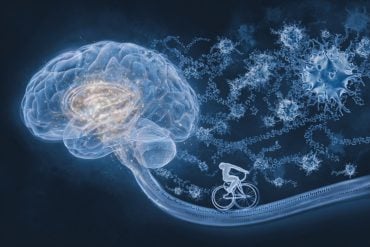People who wish to know how memory works are forced to take a glimpse into the brain. They can now do so without bloodshed: RUB researchers have developed a new method for creating 3D models of memory-relevant brain structures. They published their results in the trade journal Frontiers in Neuroanatomy.
Sea Horse gave the hippocampus the name
The way neurons are interconnected in the brain is very complicated. This holds especially true for the cells of the hippocampus. It is one of the oldest brain regions and its form resembles a sea horse (hippocampus in Latin). The hippocampus enables us to navigate space securely and to form personal memories. So far, the anatomic knowledge of the networks inside the hippocampus and its connection to the rest of the brain has left scientists guessing which information arrived where and when.

Signals spread through the brain
Accordingly, Dr Martin Pyka and his colleagues from the Mercator Research Group have developed a method which facilitates the reconstruction of the brain’s anatomic data as a 3D model on the computer. This approach is quite unique, because it enables automatic calculation of the neural interconnection on the basis of their position inside the space and their projection directions. Biologically feasible network structures can thus be generated more easily than it used to be the case with the method available to date. Deploying 3D models, the researchers use this technique to monitor the way neural signals spread throughout the network time-wise. They have, for example, found evidence that the hippocampus’ form and size could explain why neurons in those networks fire in certain frequencies.
Information become memories
In future, this method may help us understand how animals, for example, combine various information to form memories within the hippocampus, in order to memorise food sources or dangers and to remember them in certain situations.
In a joined project with the Mercator Foundation, Ruhr-Universität Bochum has set up the Mercator Research Group “Structure of Memory”. Experimental and theoretical neuroscientists as well as philosophers make up the team, which has been studying episodic and semantic memory processes and the way they relate to other cognitive functions since 2010.
Contact: Press Office – Ruhr University Bochum
Source: Ruhr University Bochum press release
Image Source: The image is credited to M. Pyka and is adapted from the Ruhr University Bochum press release
Original Research: Full open access research for “Parametric Anatomical Modeling: A method for modeling the anatomical layout of neurons and their projections” by Martin Pyka, Sebastian Klatt and Sen Cheng in Frontiers in Neuroanatomy. Published online September 15 2014 doi:10.1371/journal.ppat.1004348
Parametric Anatomical Modeling: a method for modeling the anatomical layout of neurons and their projections
Computational models of neural networks can be based on a variety of different parameters. These parameters include, for example, the 3d shape of neuron layers, the neurons’ spatial projection patterns, spiking dynamics and neurotransmitter systems. While many well-developed approaches are available to model, for example, the spiking dynamics, there is a lack of approaches for modeling the anatomical layout of neurons and their projections. We present a new method, called Parametric Anatomical Modeling (PAM), to fill this gap. PAM can be used to derive network connectivities and conduction delays from anatomical data, such as the position and shape of the neuronal layers and the dendritic and axonal projection patterns. Within the PAM framework, several mapping techniques between layers can account for a large variety of connection properties between pre- and post-synaptic neuron layers. PAM is implemented as a Python tool and integrated in the 3d modeling software Blender. We demonstrate on a 3d model of the hippocampal formation how PAM can help reveal complex properties of the synaptic connectivity and conduction delays, properties that might be relevant to uncover the function of the hippocampus. Based on these analyses, two experimentally testable predictions arose: (i) the number of neurons and the spread of connections is heterogeneously distributed across the main anatomical axes, (ii) the distribution of connection lengths in CA3-CA1 differ qualitatively from those between DG-CA3 and CA3-CA3. Models created by PAM can also serve as an educational tool to visualize the 3d connectivity of brain regions. The low-dimensional, but yet biologically plausible, parameter space renders PAM suitable to analyse allometric and evolutionary factors in networks and to model the complexity of real networks with comparatively little effort.
“Parametric Anatomical Modeling: A method for modeling the anatomical layout of neurons and their projections” by Martin Pyka, Sebastian Klatt and Sen Cheng in Frontiers in Neuroanatomy. doi:10.1371/journal.ppat.1004348






